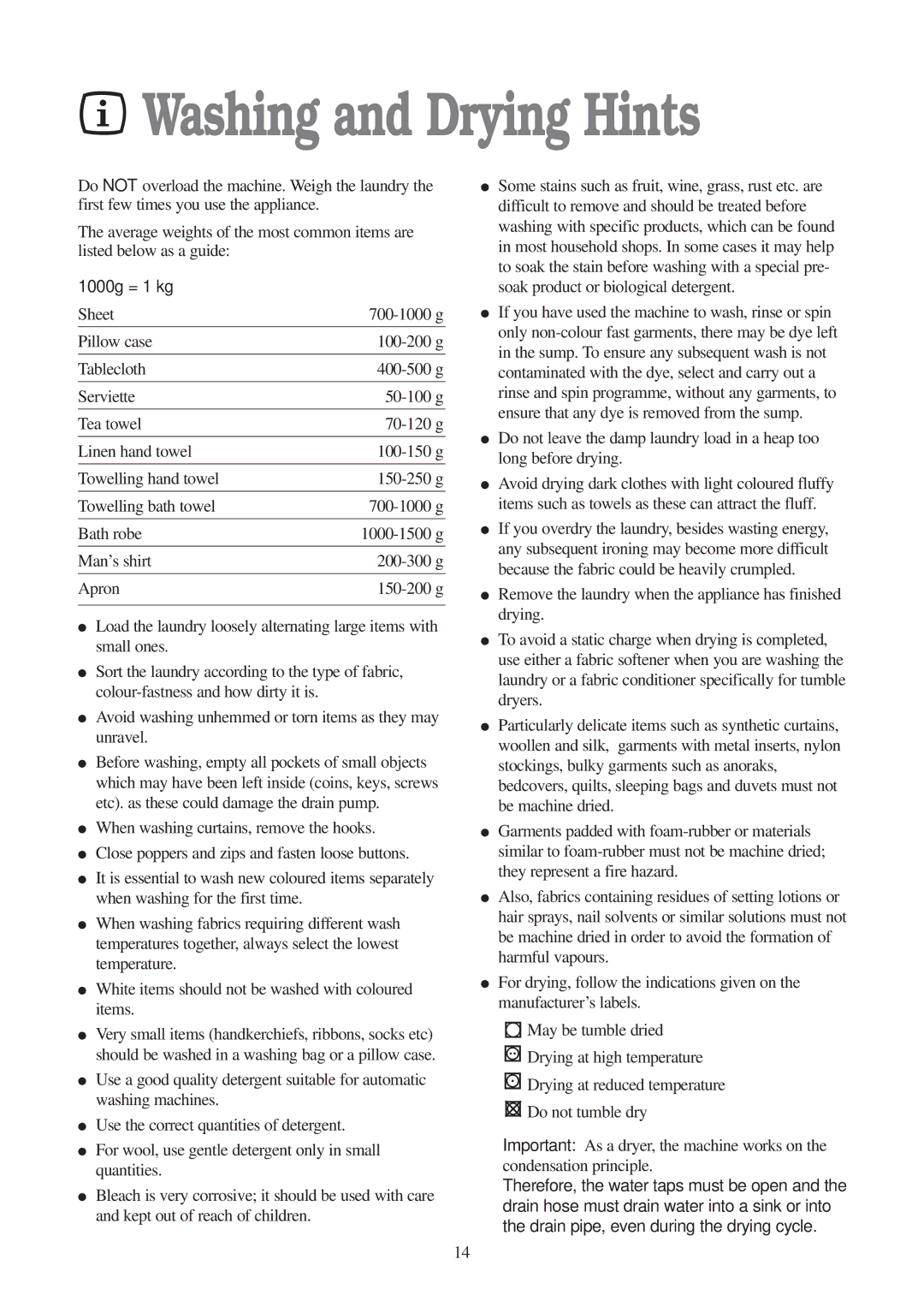EWD 1409 I specifications
The Electrolux EWD 1409 I is a versatile and efficient washer-dryer that caters to the needs of modern households. This innovative appliance stands out for its combination of advanced technology, energy efficiency, and user-friendly features, making laundry a far more manageable task.One of the standout features of the EWD 1409 I is its impressive washing capacity. With a maximum load of 9 kg for washing and 5 kg for drying, it strikes a fine balance between catering to small and large loads without compromising on performance. The washer-dryer is equipped with various washing programs, including delicate, cotton, and synthetic cycles, ensuring that all fabrics are cared for appropriately. It also features a quick wash option, allowing users to clean lightly soiled items in just 20 minutes.
The EWD 1409 I incorporates cutting-edge technology to enhance cleaning performance. Its innovative sensor technology automatically detects the load size and adjusts water and energy consumption accordingly, promoting efficiency and sustainability. This appliance boasts an A-rated energy efficiency classification, helping families reduce their carbon footprint while saving on utility bills.
In addition to its efficient washing capabilities, the EWD 1409 I also excels in drying performance. The integrated drying function utilizes a heat pump system, a gentler method that minimizes fabric wear while ensuring effective moisture removal. This technology makes it suitable for a wide range of fabrics, providing peace of mind that clothes will come out dry and unharmed.
User convenience is also a priority in the design of the EWD 1409 I. Its intuitive control panel features a digital display, allowing users to easily select programs and monitor the progress of the wash and dry cycles. The delay start option is particularly useful for those with busy schedules, enabling users to schedule their laundry to start at a later time.
With its modern design and compact dimensions, the Electrolux EWD 1409 I fits seamlessly into any home environment. Its combination of efficiency, performance, and user-friendly features makes it a valuable addition to any laundry room, meeting the needs of users while enhancing the overall laundry experience.
